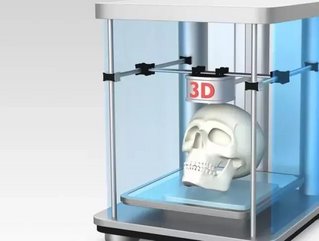Will Australia change cranial reconstruction with new 3D printing technology?

As part of a new procedure using stem cells and advanced 3D printing technology, a team of Western Australian scientists are developing new ways for patients in need of cranial reconstruction to regrow parts of their skull.
With the help of a A$2 million grant from the Western Australia State Government, the 3D printed cell-based skull replacement at Royal Perth Hospital may increase the success rate of the procedure, and the quality of life for patients following the intense surgery.
RELATED TOPIC: 4WEB Medical brings 3D printing implants to Australia
It could potentially become a game-changer in cranial reconstruction.
“This project highlights some of the innovative and groundbreaking research that is under way in Western Australia’s public health system, and the commitment of the Government to supporting this crucial work,” said Australian Health Minister Kim Hames.
As studies on 3D printed stem cell cultures continue, the Royal Perth research team is focused on making strides toward improving the results of these cranial reconstructive operations, all while making it more time friendly and cost effective.
RELATED TOPIC: How 3D printing can impact the Australian real estate market
Most of these patients either had their skull badly damaged in a serious head injury or were born with a skull-related deficiency. As a result, this new procedure would have a piece of bone removed and later reimplanted.
Doctors in Australia are already using 3D printing to replace large parts of skull bone or repair skull fractures.
In NSW, neurosurgeon Marc Coughlan has repaired fractured skulls over the past couple of years with plastic implants made by a Melbourne company which used 3D printers to mould the implants to the exact contours of a patient’s skull.
RELATED TOPIC: Aussie mining and finance companies urged to share mental health information
However, titanium plates, plastics or ceramics used during these operations often degrade over time and can lead to infection.
Cranial reconstruction is often a difficult process, in particular for patients with severely-damaged skulls. In addition to the damage that has occurred, some have had pieces of skull removed for surgery or to relieve pressure on swollen brain tissue.
Ceramic had also been used to repair and reconstruct skulls with a lower complication rate, but without the addition of stem cells.
Check out the latest edition of Business Review Australia!








